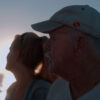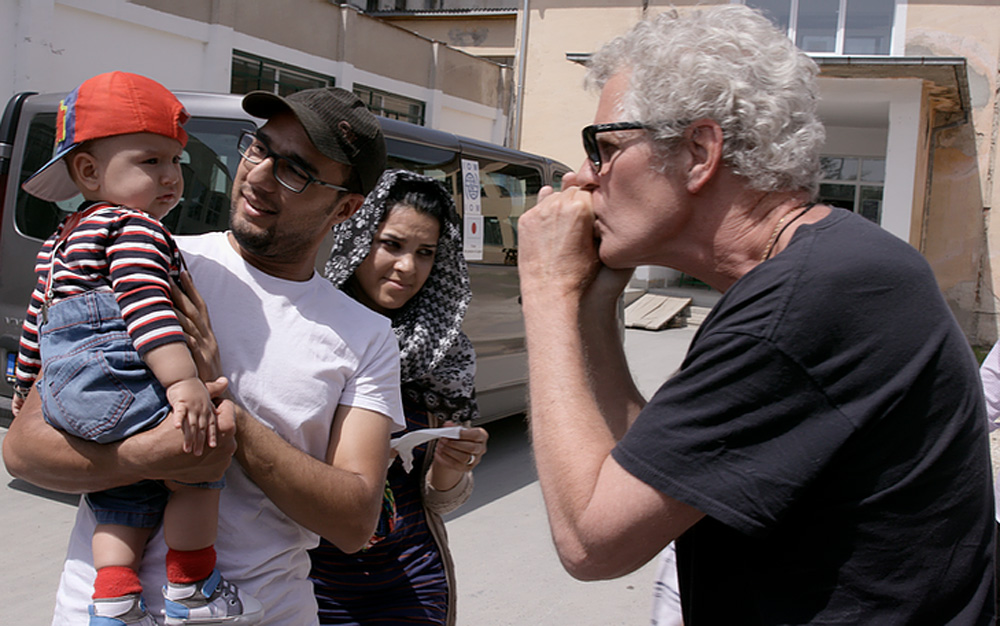If Jack Baxter had any doubts that he was right to make “The Last Sermon,” it came with the tragic news that there had been another terrorist bombing in the summer of 2017 at the Ariana Grande concert in Manchester like the one that nearly took his life in 2003 at a club in Tel Aviv, along with that of his co-director Joshua Faudem, a bartender there.
“We’re sitting in France, enjoying our croissants and coffee and I get the word that that went down and it’s the same kind of thing that happened in making ‘Blues by the Beach,’” Baxter said of following up the 2004 account of the terrorist attack in Tel Aviv he previously worked on with Faudem. “It made everything very serious because we were flying along there and then all of a sudden, this whole terror thing happens where people are there to enjoy music just like Mike’s Place and you have the ugliness of terror and violence that comes in.”
Baxter set out to bring joy with “The Last Sermon,” always at the ready with his harmonica as Faudem holds the camera, with the two traveling across Europe with the end goal of speaking to the families of those responsible for the Mike’s Place bombing just over a decade after the fact with the aim of understanding and forgiveness. Along the way, the duo meets up with people of all stripes from a variety of countries, showing both how every day life isn’t all that different from one place to another yet how fragile it can be when under threat of extremists that see violence as a means to an end. By actually invoking the tenets of the religion that the men that plotted the attack on Mike’s Place purportedly believed in, Baxter and Faudem’s open-hearted interpretation of the Islamic faith guides them towards a place of enlightenment for not only themselves but for everyone they come across.
While the film had been set for travel around the world earlier this year following a premiere in Tunisia in February, the coronavirus had other plans, but “The Last Sermon” is making its way into the world now via a digital release and Baxter shared why he felt compelled to revisit this traumatic event in his life, the itinerary for the film and looking for peace.
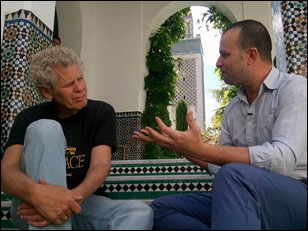
I went to Israel the second time in less than a year in April 2003 to see if I could do a documentary about Marwan Barghouti, a popular Palestinian leader [that] the Israeli group Peace Now believed was a likely successor to Yasser Arafat. He was going on trial for terrorism activities, being one of the main players in the second intifada, and since he spoke English and Hebrew perfectly, along with Arabic, he was considered to be someone who could perhaps make the peace between Palestinians and Israelis. He’s known as a Palestinian Nelson Mandela or a candidate to be that, so I went to his trial, and the documentary fell apart basically on the first day when an Israeli documentarian told me that she was already doing a documentary about him and she had the inside track — she had already been to Ramallah and [met with his] wife, a lawyer, and his family, so I figured that’s the end of me. I’ve got to get out of here.
I changed my ticket and I was going to go back in two days, but I decided to go out that night and put one on, so I walked down the beach towards the American Embassy and I heard music coming out of Mike’s Place. I went in there and told my tale of woe to the owner of Mike’s Place, his name is Gal Ganzman, and he said, “Forget about religion and politics. Why don’t you do a documentary about Mike’s Place? Because this is what’s really happening in Israel. This is the real Israel,” as he put it. I looked around and there were Israeli, Arabs, Europeans in there and everybody was dancing, having a good time and I thought this was perfect story that could showcase how people were surviving during the second intifada. Gal said his bartender that he knew, Joshua Faudem, who just got back from the Czech Republic a week or so before, had a camera and he could arrange for me to do this.
Joshua and I met the next day and I told him, “Look, I’ve got a thousand dollars. I’m going to be here for another three weeks. That’s all I got, but if you want it, you’ve got it” and we’ll interview people and see if we can come up with a movie. And that’s exactly how it happened. My last night there was April 30th. I went to Mike’s Place and I was hanging out outside. I was waiting to say goodbye actually to the guy who really is the hero of Mike’s Place, Avi Tabib, a security guard and I was one minute away from leaving and that’s when the suicide bomber came up. [Avi] fought with him and prevented him from getting inside, and [the bomber’s] partner was waiting around until he blew himself up because the plan I guess was to come in when the cops and everybody else came and he would step up and kill the first responders. But he freaked out apparently. So I was about six feet away from the bomber when he exploded. Everybody around me got killed, and for some reason — I don’t know why — I survived, and the rest of it is pretty much contained within “The Last Sermon” as far as my motivations for wanting to do this film as a follow-up.
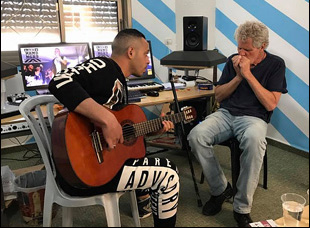
No, we’re talking about a 14-year gap, but I always did want to tell a bigger story. We knew these guys were from Great Britain and that this was a very mysterious, serious thing that two British nationals would come in, so we knew that, but we didn’t know how far their connections went. I was in L.A. trying to show the film [“Blues By the Beach”] for Academy Award consideration, and I heard on the news that Mohammad Sidique Khan [believed to have masterminded the 2005 terror attacks in London] had been traced back to the Mike’s Place bombing and that he was friends with these two guys. This information was never out because Mohammad Sidique Khan wasn’t famous at that point. But that he had come into Israel ten weeks before the bombing, so the connection was right there and if people had taken a look or the pieces had been put together, perhaps 7/7 [attack in London] would not have happened. So this attack on Mike’s Place was symbolic of a lot of things. First of all, it’s right next door to the American Embassy and the morning of April 30th [when the attack happened] is when the road map for peace plan was presented by the U.N. representative over there.
This has been talked about in certain circles and scholarly papers about terrorism, but a lot of people don’t know about the terror attack at Mike’s Place and what it meant. It was the first of its kind ever in Israel against a music bar where Israelis, Arabs, Europeans and U.S. Marines were next door, and it was the night of the same day the peace road map was out, so they wanted to derail that. They tried to kill it in its infancy and to tell you the truth, they did. But I think “The Last Sermon” puts that together. Now it’s not meant to be some kind of resuscitation of that, but the reason that made us have to do it because we wanted to wrap all of that up and I think we did.
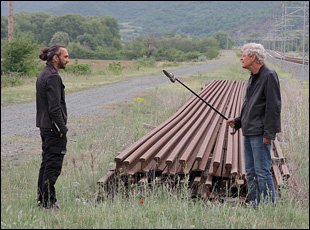
Actually, it was planned out for over year. We had tried to do another documentary – something similar about going across Europe, but concerning a friend of mine that was my Islamic consultant on “Brother Minister: The Assassination of Malcolm X,” who is an Imam named Benjamin Bilal, who was born in Harlem and was Jewish. Right before his Bar Mitzvah, he started reading about Elijah Muhammad and he became a Muslim, so his story was a story that reaches out across the transom to Jews and Christians. That had been in the planning stages for a few years and when that didn’t work, I was in Israel, doing a short documentary about a very prominent American Zionist named Helen Friedman, who died recently, and she was connected to Americans for a Safe Israel.
So I’ve been all over the West Bank, and while I was there, Avi Bohbot, one of the producers of “The Last Sermon,” said to me and Joshua, “Why don’t you guys do a film where you go across Europe and try to meet with these families of the two terrorists to get their angle and use that as our final stop? In the mean time, you guys do a story about the refugee crisis in Europe,” so we had it all planned out. We had fixers in every country. They figured out exactly how we do this and where do we go, who we interview — like in Hungary, we interviewed the mayor who probably is going to be the next Victor Orban, so it was not just to get the perspective of refugees and people who were sympathetic to the refugees, but Europeans who are not sympathetic and are concerned about what’s happening in their countries, so as not put our thumb on the scale.
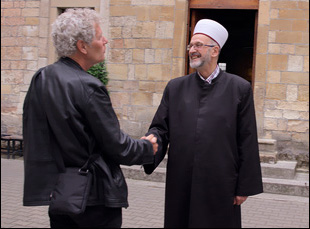
You were able to premiere in Tunisia before the lockdown – what’s it like getting it out into the world?
I spent a week there, and of course, there have been serious terrorist things that happened there, so for them to invite me and this film to screen there and then to give it an award — and I can tell you, they love the film — the Tunisians are a terrific crew of people. For them to love the film really was special and to get that kind of credibility in the Arab world, especially in Tunisia, considering that the Arab Spring started there, was really a great thing for us.
“The Last Sermon” is now available on iTunes.

